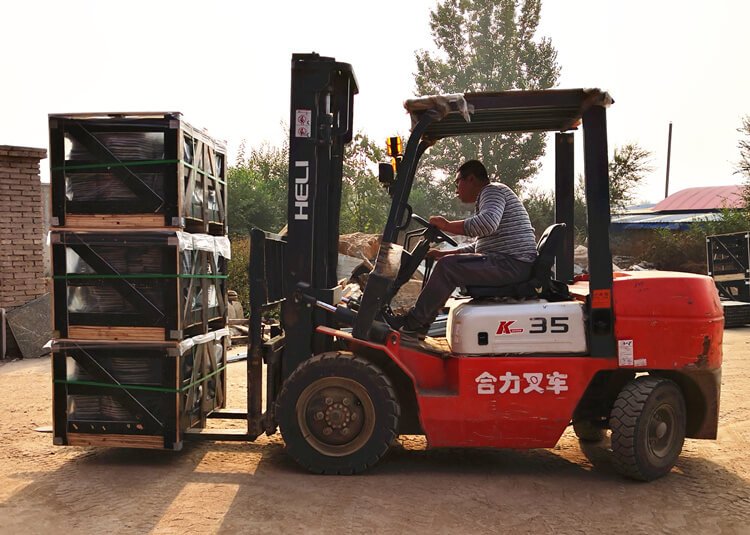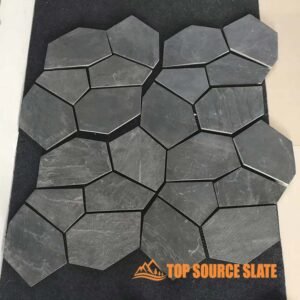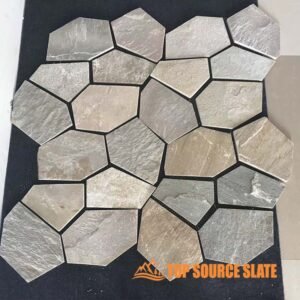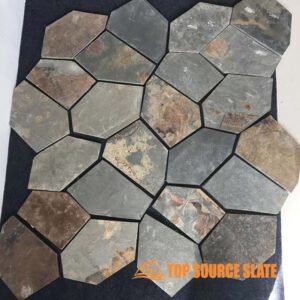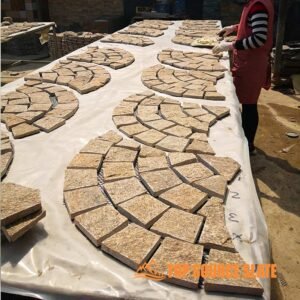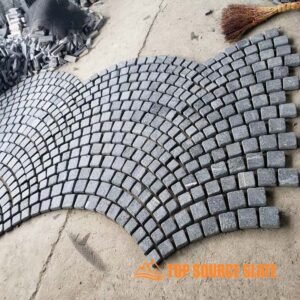In qualità di produttore, esportatore e fabbrica cinese di pietra culturale, pietra sporgente e pietra impiallacciata, il volume delle esportazioni di pasta per pavimentazione pazzesca in pietra per pavimentazione rappresenta anche gran parte dell'esportazione totale. Presentiamo come viene prodotta la pazza pavimentazione in pietra.
Cos'è la pazza pavimentazione in pietra?
Pietra per pavimentazione pazza conosciuta come Pietra per pavimentazione pazza irregolare, Pietra per pavimentazione casuale in ardesia, Pietra per pavimentazione in ardesia paesaggistica, Patio in pietra per pavimentazione irregolare in pietra naturale, Pietra per pavimentazione casuale in ardesia, Pavimentazione in pietra per pavimentazione culturale, Pietra per pavimentazione pazza & Finitrici, pavimentazioni pazze per l'abbellimento del paesaggio, ecc. Sono costituite da 6-7 pezzi di truciolo e sono ampiamente utilizzate per passerelle, pavimentazioni stradali, finitrici per vialetti, giardini, pareti esterne di case, pavimentazioni, piastrelle per pareti e pavimentazioni di percorsi. Commerciale e residenziale.
La pavimentazione in pietra pazza è composta da 6-7 pezzi di piastrelle su fogli di rete, solitamente 4 fogli per metro quadrato. Lo spessore normale è di circa 1-2 cm. per noi sono disponibili anche altri spessori.
La pazza pavimentazione in pietra, una scelta non convenzionale ma accattivante nel paesaggio moderno, ha incuriosito proprietari di case e designer con i suoi motivi irregolari unici e il ricco significato storico. Questo articolo offre un'esplorazione completa della sua definizione, dei diversi vantaggi che apporta al design per esterni, della selezione critica dei materiali e dell'intricato processo di produzione, fornendo approfondimenti profondi sia agli appassionati che ai professionisti.
Significato storico
La pavimentazione pazzesca, caratterizzata dal suo assemblaggio simile a un mosaico di forme e dimensioni irregolari, sfida coraggiosamente l'uniformità tipicamente associata ai materiali da pavimentazione tradizionali. Originato da antiche tecniche romane, questo metodo ha guadagnato importanza durante l'era vittoriana per il suo uso parsimonioso della pietra avanzata e per la sua capacità di creare percorsi e spazi esterni di grande impatto visivo. Oggi continua a ispirare la creatività nell'architettura del paesaggio, fondendo perfettamente il fascino storico con la sensibilità estetica contemporanea.
Vantaggi di Crazy Paving nel paesaggio
Il fascino delle pavimentazioni pazze non risiede solo nel suo fascino estetico ma anche nei suoi vantaggi pratici. Abbracciando l'irregolarità, questo stile di pavimentazione favorisce un aspetto naturale e organico che si armonizza facilmente con vari stili architettonici e ambienti naturali. A differenza della pavimentazione convenzionale, che spesso impone schemi geometrici rigidi, la pavimentazione pazza incoraggia l’espressione artistica attraverso le sue possibilità di layout flessibili, esaltando il carattere unico di ogni progetto. Inoltre, le sue pietre ad incastro garantiscono maggiore durata e resistenza allo scivolamento, rendendolo la scelta preferita per percorsi, cortili e vialetti dove la sicurezza e l'aspetto estetico sono fondamentali.
Selezionare i materiali giusti
Tipologie di Pietre Ideali per Pavimentazioni Pazzesche
La scelta della pietra appropriata è fondamentale per ottenere l’estetica desiderata e garantire una durabilità a lungo termine. Le pietre naturali come l'arenaria, l'ardesia e il calcare sono preferite per la loro robustezza e la vasta gamma di colori e strutture. Ogni tipo di pietra offre caratteristiche uniche che possono essere adattate per integrare specifici temi paesaggistici e motivi architettonici.
Considerazioni: longevità e appeal visivo
Nelle applicazioni esterne, la durabilità è fondamentale, garantendo la resilienza alle variazioni climatiche e al passare del tempo. Le pietre con elevata resistenza alla compressione e agli agenti atmosferici richiedono una manutenzione minima, mantenendo il fascino visivo per molti anni di esposizione. Le considerazioni estetiche comprendono non solo la variazione di colore e la struttura della superficie, ma anche il modo in cui questi elementi interagiscono con lo schema progettuale complessivo, creando un ambiente esterno coeso e visivamente gradevole.
Esplorare le applicazioni creative
Dai folli modelli di pavimentazione che evocano paesaggi naturali alle innovative pazze idee per pavimentazioni di patio e progetti di giardini, questa tecnica versatile consente una creatività infinita. Comprendere come riparare la pavimentazione pazza utilizzando la giusta miscela di cemento e affrontare sfide specifiche come la posa della pavimentazione pazza sulla sabbia o l'utilizzo di materiali come la pavimentazione pazza di Liscannor e la pavimentazione pazza del bluestone garantisce un'integrazione perfetta in qualsiasi spazio esterno. Che si tratti di creare un percorso pavimentato o di valorizzare un camino con tecniche di puntamento uniche, esplorare il mondo della pavimentazione pazzesca apre le porte a soluzioni di design distintive che fondono funzionalità e fascino estetico, il tutto considerando prezzi pazzeschi convenienti.
Il processo di produzione del lastricato per pavimentazione pazza
Il processo inizia con una meticolosa selezione di pietre di qualità superiore che soddisfano rigorosi criteri di durata e pregio estetico. Questo passaggio fondamentale garantisce che il prodotto finito soddisfi e superi le aspettative in termini di funzionalità e fascino visivo.
Scegliere Alta qualità Materie prime
Prima di tutto, sceglieremo materiali di alta qualità e di buon colore, che garantiranno che anche i prodotti siano di alta qualità.
Selezione di materie prime di alta qualità: il processo inizia con una meticolosa selezione di pietre di qualità superiore che soddisfano rigorosi criteri di durata e pregio estetico. Questo passaggio fondamentale garantisce che il prodotto finito soddisfi e superi le aspettative in termini di funzionalità e fascino visivo.

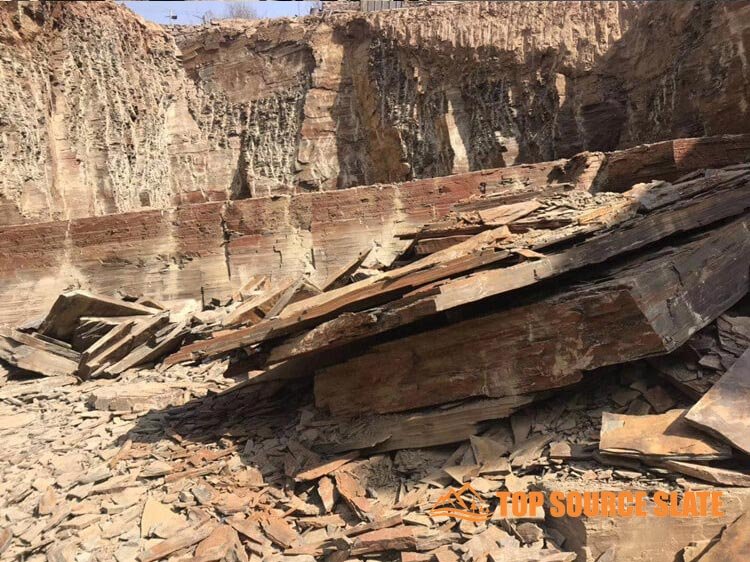
Disegna il contorno della pavimentazione in pietra pazzesca
Dopo aver selezionato le materie prime, provvederemo prima a fare in modo che gli operatori delineino la particella con una penna per un taglio più preciso.
Schizzo del profilo della pietra per pavimentazione pazza: la pianificazione dettagliata prevede la creazione di un progetto del layout e delle dimensioni desiderate e l'ottimizzazione dell'uso dei materiali per raggiungere un equilibrio tra espressione artistica e utilità pratica.


Tagliare a pezzi secondo il contorno e dividere
I materiali vengono trasportati all'officina di taglio e disposti per tagliare secondo il contorno, i pezzi ritagliati sono relativamente spessi e ogni pezzo deve essere diviso allo spessore richiesto dall'ordine, solitamente 1-2 cm di spessore.
Segmentazione in pezzi in base al contorno e frammentazione: abili artigiani scolpiscono meticolosamente le pietre in forme irregolari, migliorando l'estetica naturale e facilitando l'incastro senza soluzione di continuità durante l'installazione.
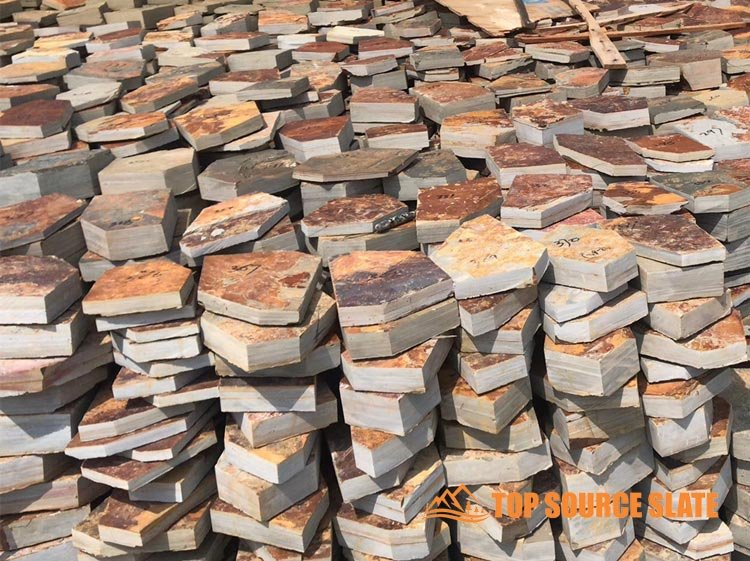
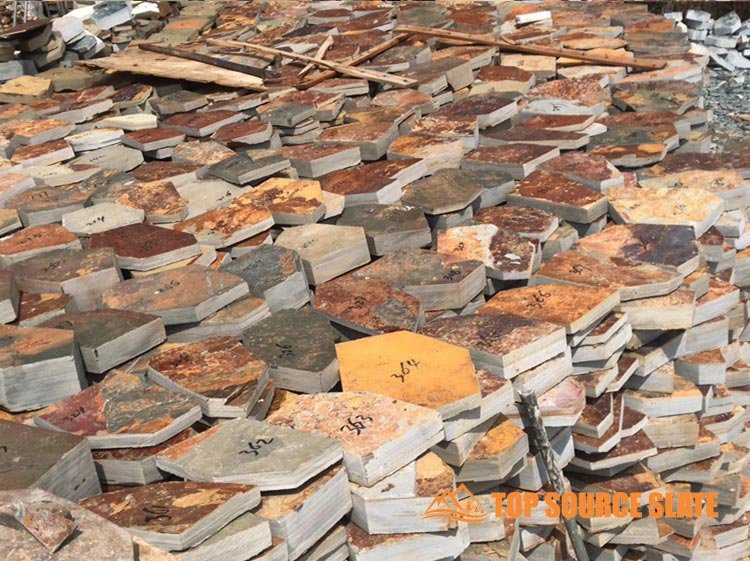
Produzione con lo stampo
Dopo aver trovato il corrispondente stampo per lastricato per pavimentazione pazza, gli operai metteranno prima i chip nella posizione corrispondente, quindi metteranno la colla sul retro di ciascun chip a turno, quindi lo metteranno nella posizione corrispondente, resteranno circa 10 minuti per togliere il stampo e metti la pietra per pavimentazione pazza prodotta in attesa di essere messa nel magazzino. Ecco una foto del retro della pazza pavimentazione in lastre di pietra.
Fabbricazione con lo stampo: l'utilizzo di stampi garantisce coerenza in spessore e forma, semplificando il processo di installazione mantenendo l'integrità strutturale e la coerenza estetica.
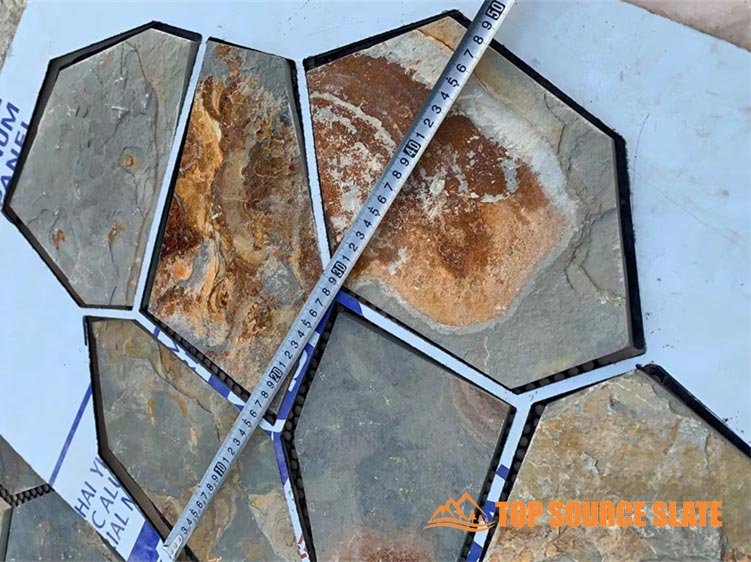



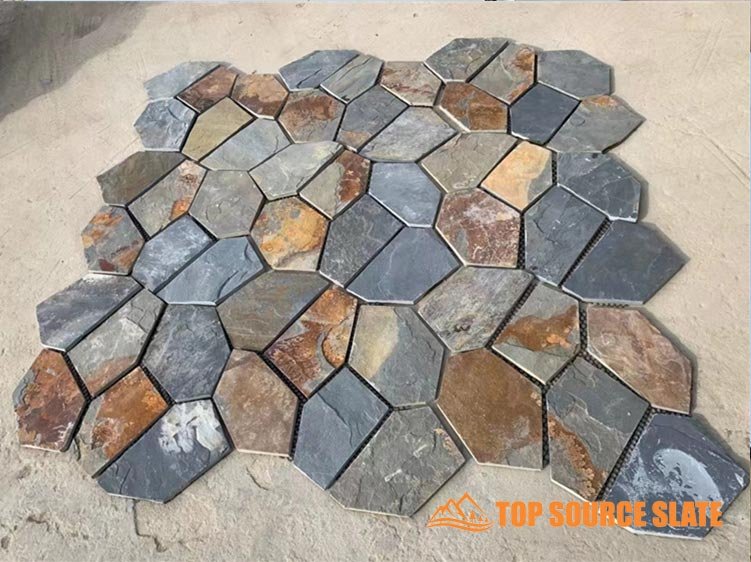
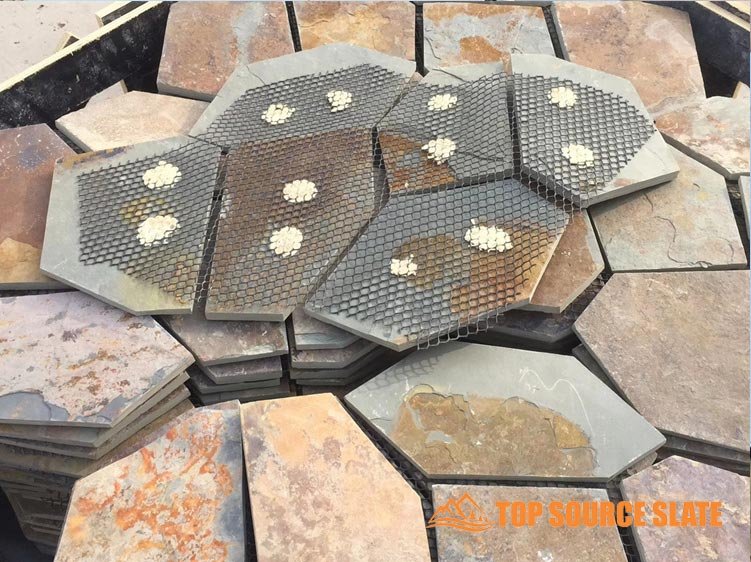
Pacchetto di pazzesche lastre di pietra per pavimentazione
Il pacchetto pazzesco della pietra per pavimentazione è costituito da casse di compensato, è molto adatto per la spedizione a lunga distanza.
Di solito 4 pezzi per strato, 25 metri quadrati in una cassa di compensato.
Imballaggio di Crazy Paving Flagstone: un imballaggio accurato salvaguarda le pietre durante il trasporto e lo stoccaggio, assicurando che arrivino intatte e pronte per l'installazione, preservandone così la bellezza intrinseca e l'integrità funzionale.
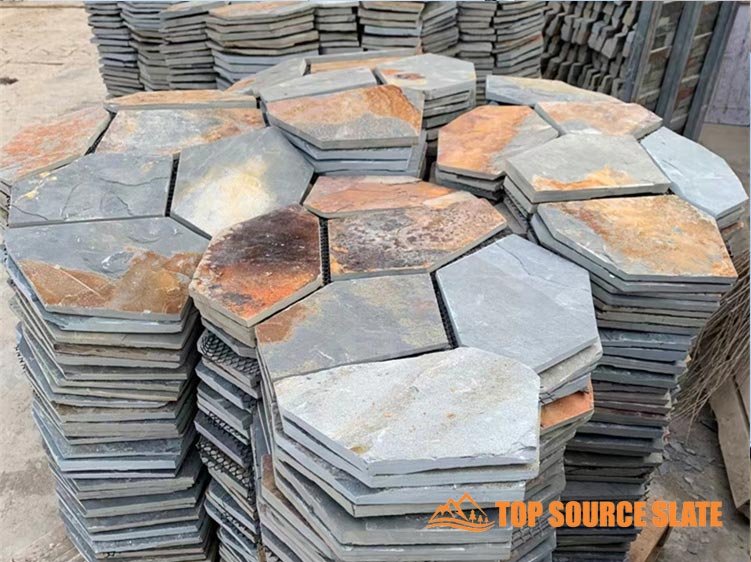
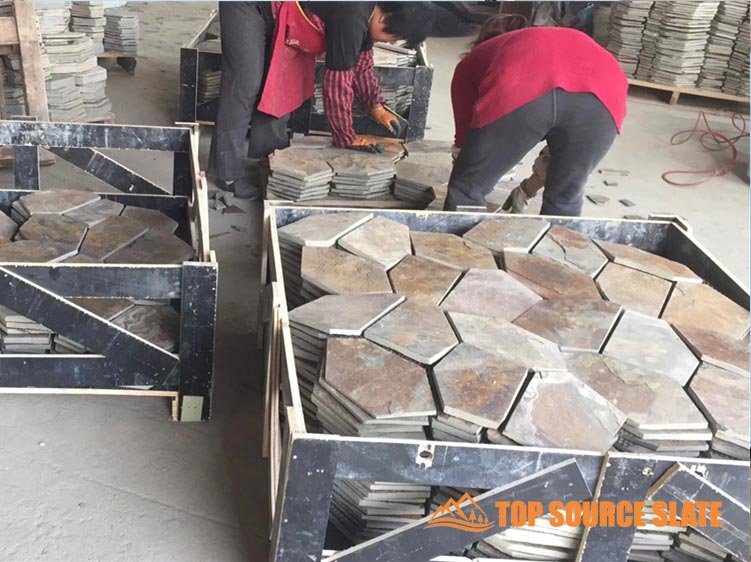
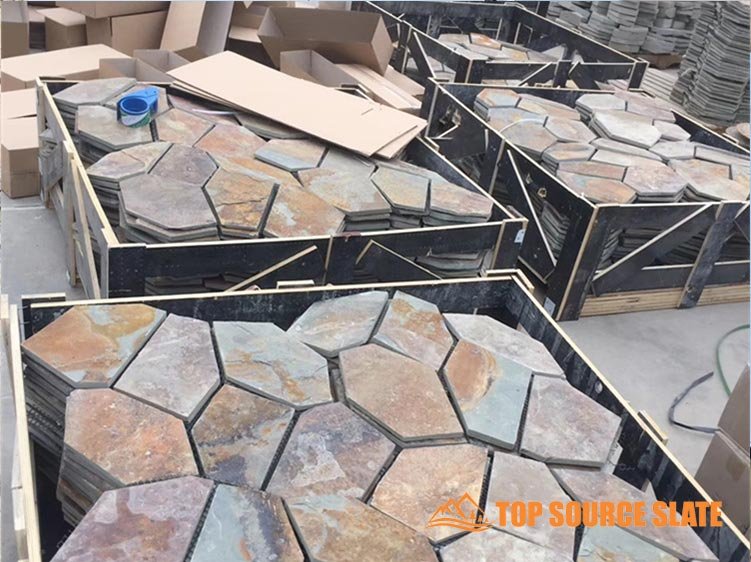
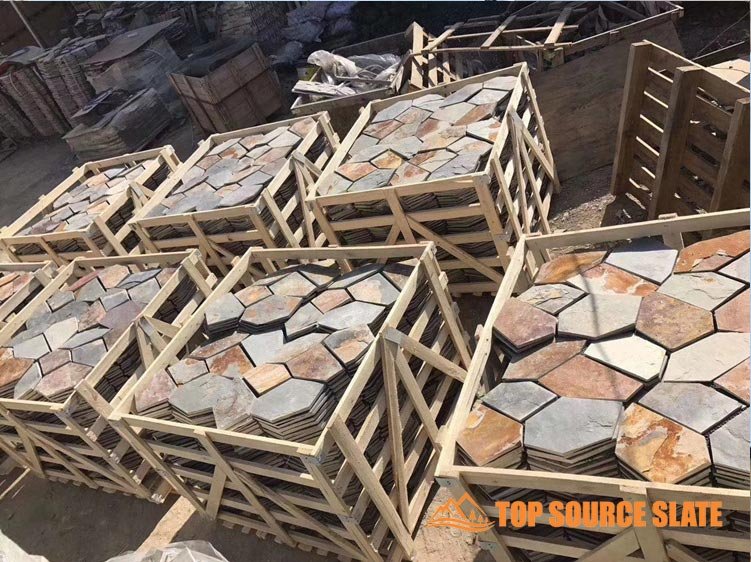
Come produrre pazzesche lastre di pietra per pavimentazione
Come posare una pavimentazione pazzesca: una guida passo passo
Come installare un patio lastricato?
Possiamo anche realizzare altri stili e colori di prodotti in pietra per pavimentazione pazzeschi.
-
 Pietra per pavimentazione con motivo pazzesco in quarzite beige proveniente dalla Cina
Pietra per pavimentazione con motivo pazzesco in quarzite beige proveniente dalla Cina -
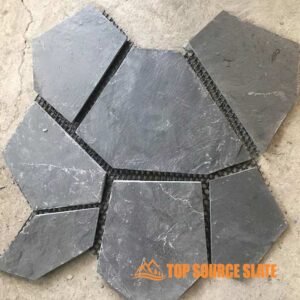 Pietra per pavimentazione pazza casuale irregolare in ardesia nera
Pietra per pavimentazione pazza casuale irregolare in ardesia nera -
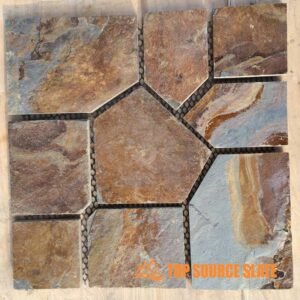 Finitrice per passerella in rete con lastre di pietra irregolari in ardesia
Finitrice per passerella in rete con lastre di pietra irregolari in ardesia -
 Pietra naturale per passerella con bandiera in pietra arrugginita
Pietra naturale per passerella con bandiera in pietra arrugginita -
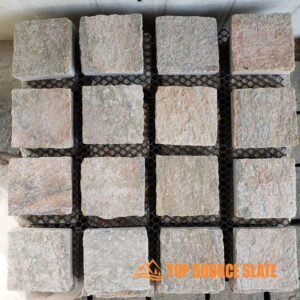 Piastrelle quadrate in pietra per vialetto
Piastrelle quadrate in pietra per vialetto -
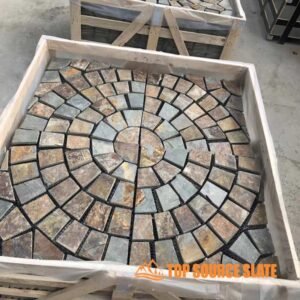 Pezzi di bandiere in pietra per pavimentazione a rete arrugginita naturale
Pezzi di bandiere in pietra per pavimentazione a rete arrugginita naturale
FAQ
Come si realizzano lastre per pavimentazione pazzesche?
Le lastre per pavimentazione Crazy sono realizzate disponendo insieme pezzi di pietra o cemento di forma irregolare per creare un motivo unico, simile a un mosaico. Il processo prevede tipicamente la selezione di pietre naturali o la colata di cemento in stampi che producono forme irregolari. La caratteristica fondamentale della pavimentazione pazza è la sua non uniformità, che le conferisce un aspetto distinto ed eclettico.
Come sono fatte le finitrici pazze?
Le finitrici pazze, simili alle lastre per pavimentazione pazze, sono prodotte colando il calcestruzzo in stampi che producono forme irregolari o tagliando la pietra naturale in pezzi casuali. Le finitrici pazze in calcestruzzo sono realizzate mescolando cemento, sabbia e aggregato (come pietrisco o ghiaia) in proporzioni variabili per ottenere la resistenza e la consistenza desiderate. Le finitrici pazze in pietra naturale vengono create spaccando o tagliando la pietra in forme irregolari, mantenendo la struttura e l'aspetto naturali.
Qual è il mix per una pavimentata pavimentazione in cemento?
La miscela per il cemento per pavimentazione pazza è tipicamente costituita da cemento, sabbia e aggregato. Un rapporto di miscelazione comune è 1 parte di cemento, 2 parti di sabbia e 4 parti di aggregato. Tuttavia, la miscela esatta può variare a seconda di fattori quali la destinazione d'uso della pavimentazione, le condizioni climatiche locali e il tipo di aggregato utilizzato (ad esempio ghiaia, pietrisco).
Qual è la base migliore per una pavimentazione pazzesca?
La base migliore per una pavimentazione pazzesca è una base solida e ben compattata che offra stabilità e impedisca movimenti nel tempo. Questo di solito comporta:
- Scavare l'area alla profondità richiesta.
- Aggiungere uno strato di materiale duro (pietrisco o macerie), compattandolo accuratamente per creare una base solida.
- Applicare uno strato di sabbia tagliente sul supporto per fornire una superficie piana su cui posare le lastre di pavimentazione.
Questa combinazione di sabbia dura e tagliente aiuta a distribuire il carico in modo uniforme, riduce al minimo il rischio di assestamenti e migliora il drenaggio sotto la pavimentazione.
Cosa metti tra una pavimentazione pazzesca?
Per colmare gli spazi tra le lastre di pavimentazione pazze e stabilizzarle, è possibile utilizzare diversi materiali:
- Composto per giunzioni: un materiale specializzato che si indurisce per creare un giunto durevole.
- Miscela di malta: una miscela di cemento e sabbia che viene applicata bagnata tra le lastre e lasciata solidificare.
- Sabbia: è possibile spazzolare sabbia asciutta o umida negli spazi vuoti per riempirli e aiutare a stabilizzare le lastre.
La scelta del materiale dipende da fattori quali preferenze estetiche, requisiti di durabilità e facilità di applicazione.
Puoi stendere una pavimentazione pazzesca sul terreno?
In genere è sconsigliabile posare la pavimentazione pavimentata direttamente sul terreno perché il terreno tende con il tempo a spostarsi e ad assestarsi, rendendo la pavimentazione irregolare ed instabile. Senza una base adeguata, c’è il rischio che le lastre di pavimentazione affondino o si spostino sotto carico. Per garantire longevità e stabilità è meglio preparare prima della posa della pavimentazione una solida base di sabbia dura e tagliente.
Devi sigillare pavimentazioni pazzesche?
La sigillatura della pavimentazione pazza è facoltativa ma può offrire numerosi vantaggi:
- Protezione contro le macchie: la sigillatura può aiutare a prevenire la penetrazione di olio, acqua e sporco nella superficie della pavimentazione, facilitandone la pulizia.
- Maggiore durabilità: la sigillatura può prolungare la durata della pavimentazione proteggendola dagli agenti atmosferici e dai danni UV.
- Miglioramento estetico: la sigillatura può arricchire i colori naturali della pietra o del cemento, conferendo alla pavimentazione un aspetto più vivace.
La decisione di sigillare dipende da fattori quali il tipo di materiale di pavimentazione utilizzato, il traffico pedonale previsto e il livello di manutenzione desiderato.
Puoi mettere la ghiaia tra una pavimentazione pazzesca?
Sì, la ghiaia può essere utilizzata come riempitivo decorativo tra le pazze lastre di pavimentazione per aggiungere consistenza e interesse visivo all'area pavimentata. Può essere applicato sulle fughe tra le lastre dopo che queste sono state posate e giuntate con malta o composto per fughe. La ghiaia offre anche ulteriori vantaggi di drenaggio, in particolare nelle aree soggette a forti piogge.
Come posare le lastre di pietra sul terreno?
- Scavare il terreno ad una profondità di almeno 150-200 mm (6-8 pollici), a seconda del tipo di terreno e della destinazione d'uso dell'area pavimentata.
- Compattare accuratamente il terreno esposto utilizzando un compattatore o un pressino manuale per creare una base solida.
- Distribuire uno strato di materiale duro (pietrisco o macerie) sul terreno compattato, compattandolo nuovamente per creare una solida base.
- Applicare uno strato di sabbia tagliente sul supporto, livellandolo accuratamente per fornire una superficie liscia su cui posare le lastre.
Questo approccio a più livelli aiuta a distribuire il carico in modo uniforme e riduce al minimo il rischio di assestamenti o movimenti nel tempo.
Qual è il materiale migliore da mettere sotto la pavimentazione?
Il materiale migliore da mettere sotto la pietra è una combinazione di sabbia dura e tagliente:
- La posa delle lastre sul terreno richiede un'attenta preparazione per garantire un'installazione stabile e duratura:
- Hard (pietrisco o macerie): fornisce una base stabile che distribuisce uniformemente il peso delle lastre e impedisce l'affondamento.
- Sabbia tagliente: crea una superficie piana per la posa delle lastre di pietra e aiuta il drenaggio sotto l'area pavimentata.
Insieme, questi materiali garantiscono una solida base che migliora la stabilità e la longevità dell'installazione della pietra.
Hai bisogno di sabbia sotto la pavimentazione?
Sì, la sabbia tagliente è essenziale per la posa delle pietre in quanto aiuta a creare una superficie piana e favorisce il corretto allineamento delle pietre. Facilita inoltre il drenaggio sotto le lastre di pietra, prevenendo l'accumulo di acqua e causando problemi come il gelo o l'erosione del suolo.
La pietra da lastrico è più economica delle finitrici?
Il confronto dei costi tra lastre di pietra e finitrici può variare in base a diversi fattori:
- Tipo e qualità dei materiali: la pietra da lastrico naturale può essere più costosa delle pavimentazioni in cemento o argilla a causa della sua unicità e bellezza naturale.
- Disponibilità: la disponibilità locale dei materiali può influire sui prezzi.
- Metodo di installazione: la complessità dell'installazione può influenzare i costi complessivi.
In generale, le finitrici in cemento tendono ad essere più convenienti delle lastre in pietra naturale, rendendole una scelta popolare per progetti attenti al budget. Tuttavia, la durabilità e l’aspetto estetico della pietra possono giustificare il suo costo iniziale più elevato per molti proprietari di case e paesaggisti.
La pavimentazione in pietra pazza esemplifica la fusione tra tradizione e innovazione nel paesaggio. La sua versatilità nella scelta dei modelli e dei materiali consente a designer e proprietari di case di creare spazi esterni che riflettono lo stile personale armonizzandosi con l'ambiente naturale. Che venga utilizzato per percorsi, cortili o accenti decorativi, questo stile di pavimentazione continua ad evolversi, offrendo infinite possibilità di espressione creativa e divertimento duraturo.
Per ulteriori colori e design, visitare il nostro pagina di pietra pazza per pavimentazione. Come a produttore ed esportatore professionale, ci impegniamo a condividere informazioni e ad assistere i nostri clienti. Per ulteriori domande, non esitate a Contattaci.

